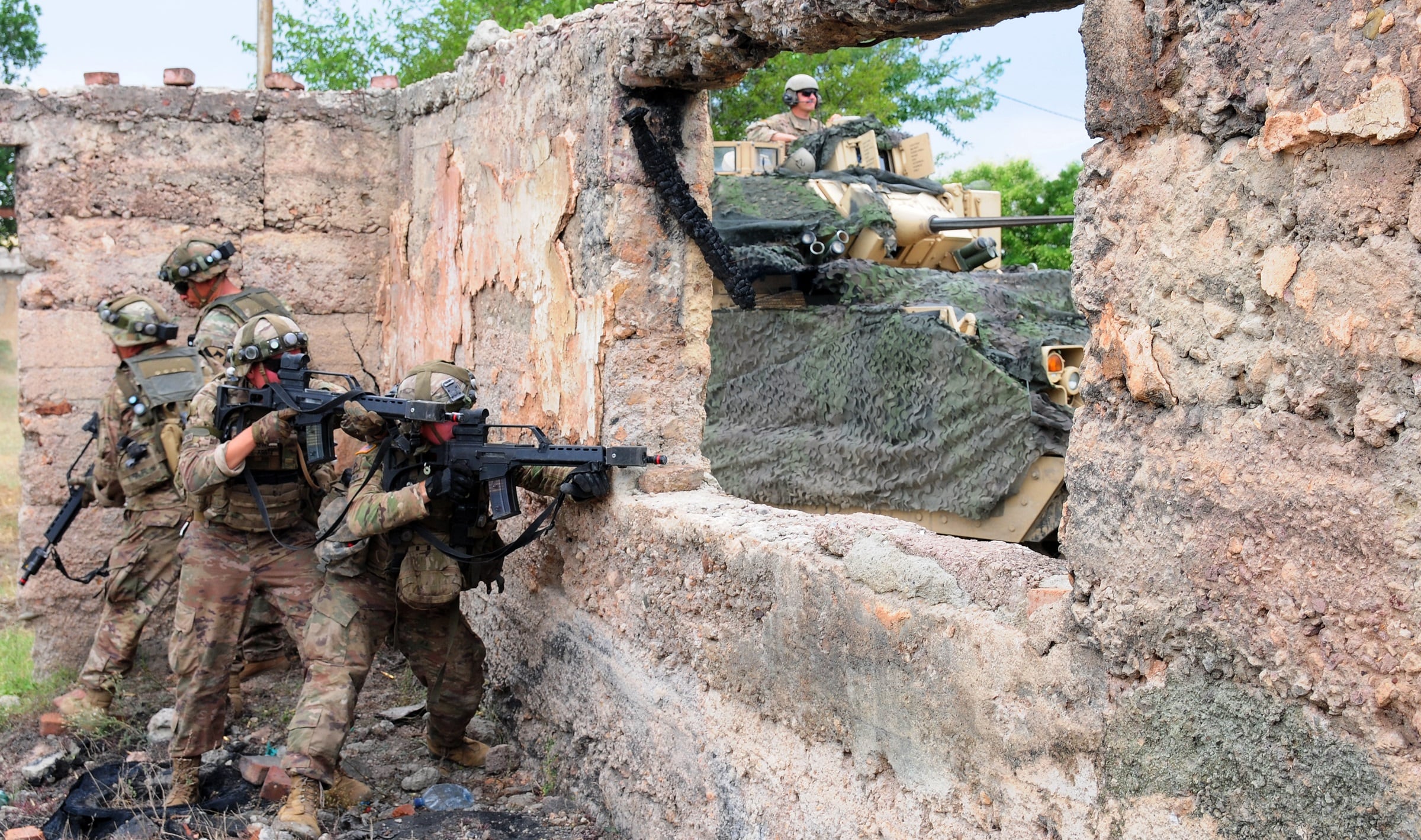On July 29, Secretary of Defense Mark Esper announced new changes to U.S. basing posture in Europe that would result in more than 10,000 troops returning to the United States from bases in Germany, followed by a relocation of military personnel to Poland and Mons, Belgium. While most of the media attention has focused on the redeployment of forces from Europe back to the United States, a new strategic decision was made by the U.S. that will result in an increased military presence in NATO’s new front yard: the Black Sea.
During his Pentagon press conference, Esper announced that a U.S. Stryker brigade would be sent to the Black Sea in what will be the first significant U.S. military ground forces deployment to the region. The Black Sea has been the epicenter of Russia’s revisionist ambitions since its 2008 war with Georgia and its 2014 invasion and occupation of Ukraine’s Crimea and invasion of Donbass. To highlight the changes in U.S. defense posture in the Black Sea, Esper described the move in the following strategic terms:
“Look at what we’re moving. What we’re doing is … we’re moving forces out of central Europe — Germany, where they had been since the Cold War, since I first traveled there in the early 1980s, and we’re now moving — we’re following, in many ways, the boundary east, where our newest allies are. So into the Black Sea region … That’s why it’s a strategic laydown that enhances deterrence, strengthens the allies, reassures them.”
What specifically will the United States be doing to enhance our deterrence capabilities in the Black Sea? Esper indicated that the Pentagon plans to deploy a Stryker brigade into the Black Sea once U.S. forces are rotated back to the United States. This move will be the largest ever U.S. Army deployment to the Black Sea region and will mark a new development in U.S. defense posture along NATO’s eastern flank. As Esper noted in his press conference, these units will be “giving us a more enduring presence to enhance deterrence.”
To date, NATO’s presence in the Black Sea has been minimal despite the Russian invasion and annexation of Crimea in 2014. It reacted to the events in Ukraine by devoting most of its attention and limited resources to the defense of the Baltic rather than the Black Sea. In the Baltic, NATO sought to reinforce the region by creating and deploying Enhanced Forward Presence (EFP) battlegroups to each of the Baltic member states. British, Canadian and German rotational forces are the main components of the EFP battlegroups. Smaller platoon-sized units were deployed to Romania as part of the minimal Tailored Forward Presence (TFP), as opposed to the thousands of NATO forces now deployed in the Baltic.
RELATED

The U.S. now appears to be correcting this regional imbalance by strengthening NATO’s eastern flank in the Black Sea. One source in the Trump administration said that over time, the deployment of the Stryker Brigade, even if rotationally, will eventually lead to “heel-to-toe deployment” of U.S. military forces in the Black Sea.
By deploying a Stryker brigade into the Black Sea, the United States would be providing more than just a small tripwire force, but also give U.S. forces the combat capability and mobility to cover a lot of ground quickly in the Black Sea region. A Stryker brigade is equipped with a lot of firepower that includes a 30-mm gun, Javelin anti-tank missiles, and the SHORAD air defense system. Retired Gen. Ben Hodges, the former commanding general U.S. Army Europe, told me that: “A Stryker brigade helps us solve a lot of the mobility challenges of operating in the Black Sea. Romania has one of the worst road networks in the entire European Union, according to the EU. The addition of a Stryker brigade allows U.S. forces to overcome these conditions and move quickly around the region in the event of a crisis,” he said.
The Stryker brigade is a major maneuver force within the U.S. Army and its deployment to the Black Sea gives the U.S. more operational flexibility to deter a Russian move to go deeper into Ukraine if they are operating in NATO-member Romania. U.S. officials are fearful of a Russian push to secure the Black Sea coastline from Kremlin-occupied Donbass and northern Crimea, where an estimated 85,000 Russian forces are based. Ukraine’s strategic M14 highway that borders the Black Sea shoreline is highly vulnerable to a Russian attack and is part of what the Kremlin refers to as Novorossia, a region that Putin claims has been part of Russian territory since the age of Catherine the Great.
Foremost in Kremlin thinking about controlling this region is its access to water. Crimea is suffering a major drought and lacks the water previously supplied by Ukraine. Moscow has long eyed taking control of the North Crimean Canal near the Ukrainian city of Kherson that is known as the water gateway to Ukraine and previously supplied Crimea with nearly all its water supplies.
Deployment of a U.S. Stryker brigade to neighboring Romania will help immensely in bolstering NATO’s posture in the Black Sea and send a powerful signal to President Putin that any future plans to move deeper into Ukraine might provoke a U.S. military response. It also would signal a deepening American commitment to the defense of our current and prospective NATO allies in the Black Sea, such as Ukraine and Georgia, that the United States is prepared to provide some military muscle to block future Russian aggression.
Glen E. Howard is the president of the Jamestown Foundation.




